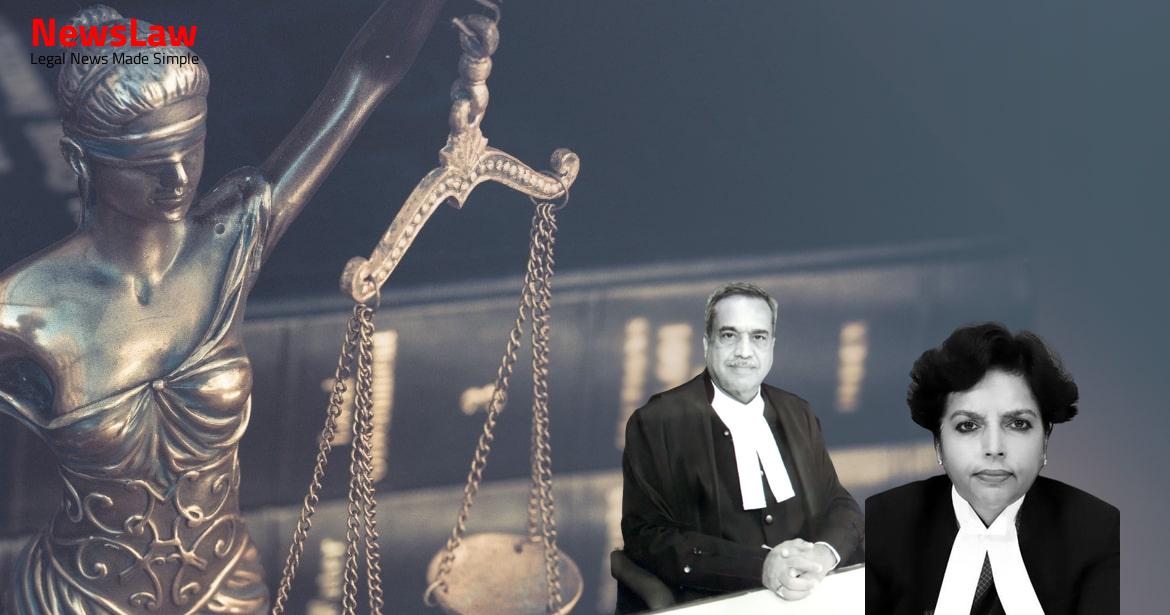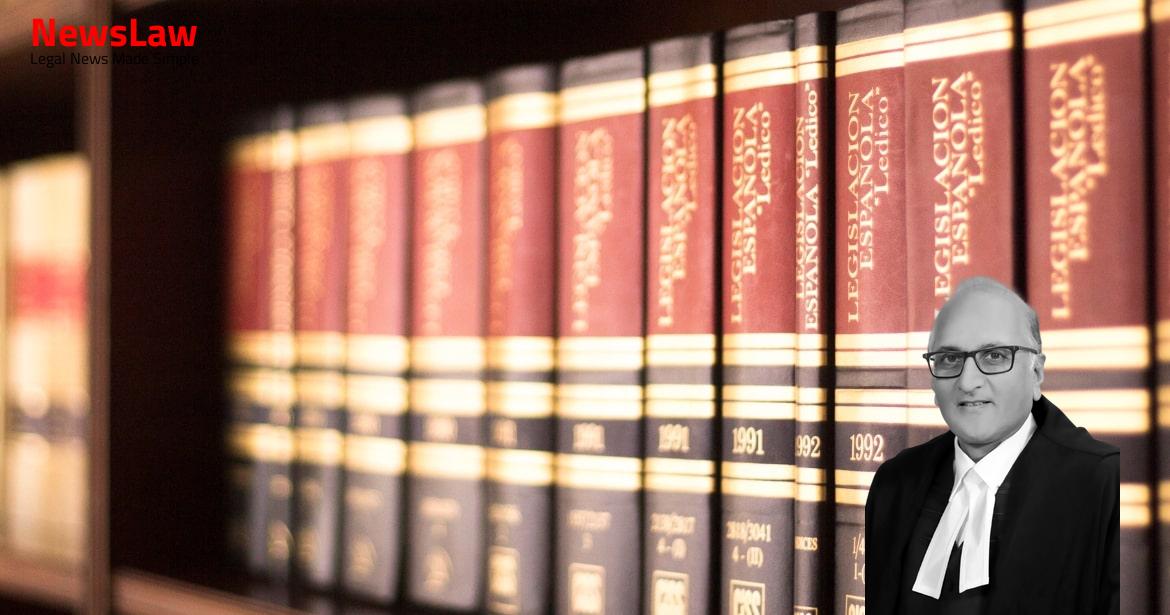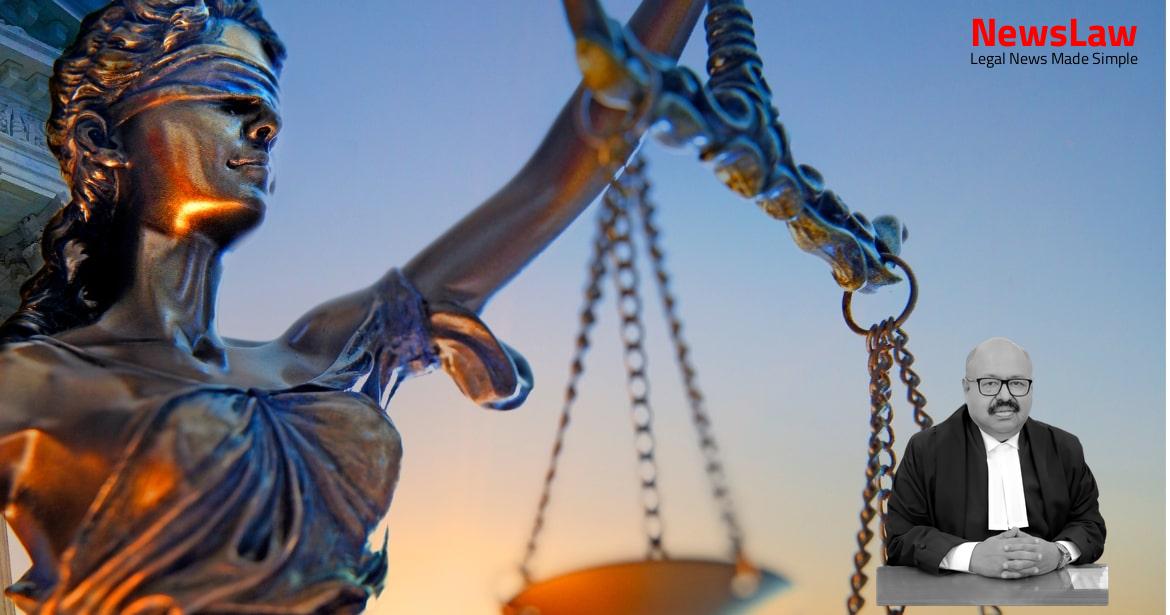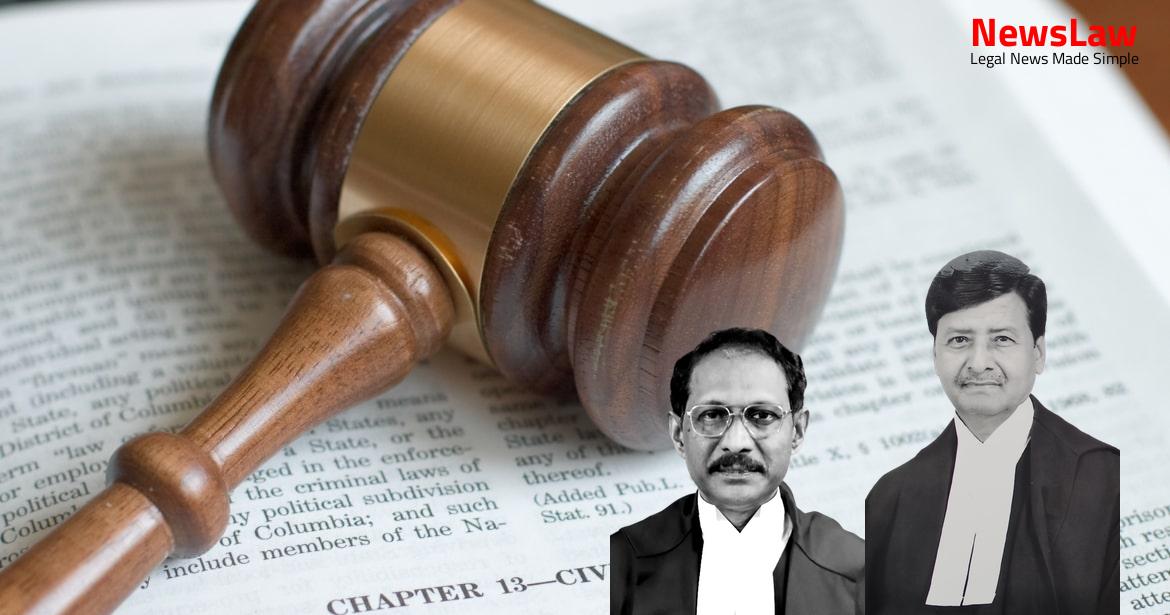Explore the detailed legal analysis undertaken by the court in a landmark case concerning building regulations enforcement. The court’s in-depth examination of various provisions and precedents sheds light on the implications for developers and flat buyers alike. Stay tuned to understand the nuances of the court’s ruling and its impact on ensuring compliance with building regulations.
Facts
- The High Court directed the Competent Authority to grant sanction for the prosecution of NOIDA’s officials within three months.
- Appellant was directed to refund consideration to flat purchasers with fourteen percent interest compounded annually for T-16 and T-17 apartments.
- The NBR 2006 distance provision in Regulation 33.2.3(i) was not mandatory, and CEO could stipulate the distance requirement based on layout plan exigencies.
- Regulation 24.1.2(6) of NBR 2010, regarding distance between adjacent building blocks, is not applicable to the distance between T-17 and T-1.
- The High Court ordered the demolition of Towers 16 and 17 in Emerald Court by NOIDA, with demolition costs borne by the appellant or recovered as arrears of land revenue.
- Home buyers were classified into groups for refund options: principal amount with twelve percent interest, those insisting on fourteen percent interest, Subvention Scheme participants, and disputed cases.
- Provisions of NBR 2006 and 2010 and NBC 2005 were considered independently, with arguments regarding violations and set-back requirements for tower-like structures.
- The Regulation on distance between building blocks does not govern the distance between T-1 and T-17 as they are part of the same block.
- Flat purchasers who opted not to wait for the Court’s decision were entitled to principal amount with fourteen percent interest.
- Towers 16 and 17 were considered part of the same building block with implications on height restrictions.
- The appellant had provided a green area of 12,064.91 sq. mtrs, pending notification from the State of Uttar Pradesh.
- The National Buildings Construction Corporation Limited was appointed to examine facts related to the dispute, particularly the dead-end sides of towers T-1 and T-17.
- The completion map showed the green area in front of T-1 where T-16 and T-17 were being constructed.
- Issues regarding distance requirements between building blocks under NBR 2010 and NBR 2006 were discussed.
- The initial sanction for T-16 and T-17 was given under NBR 2006, with the final sanction increasing tower heights from 24 to 40 floors.
- Notices and complaints related to fire safety requirements, building regulations violations, and construction deficiencies were mentioned.
Also Read: Electoral Malpractices in Mayor Election
Arguments
- The petitioner argues that the third revised plan encroached upon the garden area in front of T-1 without the consent of flat owners.
- The petitioner contends that the concept of building blocks should not allow for subversion of minimum distance requirements.
- There is a concern about fire safety if minimum distances between structures are not maintained.
- The petitioner asserts that all towers on Plot No 4 should be treated as one building block.
- The argument is made that the UP 1975 Act should apply in this case due to lack of proper declaration.
- The necessity of maintaining minimum distances is emphasized for public safety and planned development.
- The interpretation of ‘building blocks’ in the Building Regulations is debated, highlighting the lack of definition and potential for misuse by developers.
- Concerns about light, air, ventilation, and fire safety are raised due to the proximity of structures.
- The arguments of the petitioner are supported by NOIDA in some instances.
- The discretion given to developers in defining building blocks is criticized for potentially compromising the well-being of flat buyers.
- Mr Vikas Singh, the Senior Counsel for the appellant, clarified that he is not pressing a certain submission.
- Mr Jayant Bhushan, Senior Counsel for the RWA, presented a registered sub-lease deed involving NOIDA, the appellant as the lessee, and the flat buyer as the sub-lessee.
- Important provisions of the sub-lease deed include Clause 16 granting the occupant of the ground floor the right to use a sit-out area, subject to the UP Ownership Flat Act 1975.
- Clause 17 recognizes the right to use of the occupant of the top floor, also subject to the same enactment.
- The appellant’s ‘dead-end’ argument was found to have no merit during the proceedings as Ravindra Kumar submitted that T-1 and T-17 have dead-end sides facing each other, hence the 16 meters distance requirement does not apply.
Also Read: Balancing Power and Transparency: Electoral Bonds Struck Down, Disclosure Mandated
Analysis
- The expression ‘apartment owner’ is defined by Section 3(d) of the Act.
- The Act contains definitions of common areas in Section 3(i) and limited common areas in Section 3(s).
- The general liabilities imposed on promoters intending to sell an apartment are outlined in Section 4(1) of the Act.
- Section 5 of the Act provides for the rights of apartment owners.
- Section 11 allows all owners of flats to withdraw a property from the provisions of the Act by executing an instrument to that effect.
- Common areas and facilities must be disclosed in accordance with the approved layout plan or building plan.
- Alterations to the percentage of undivided interest in common areas and facilities require consent from all owners of flats.
- The UP Apartments Act 2010 applies to buildings with four or more apartments.
- Unauthorized constructions exceeding permissible limits are a common issue addressed by the Court.
- The public interest in enforcing building and municipal regulations is prioritized over private interests.
- Court caution against compounding violations of building regulations.
- Previous decisions had not effectively increased compliance with building regulations by developers.
- Impact of unauthorized constructions on planned development and public amenities is highlighted.
- Demolition and penalties are deemed necessary for unauthorized constructions.
- The Courts have the jurisdiction and power to indemnify citizens affected by unauthorized constructions.
- Regularization of unauthorized constructions by municipal authorities is discouraged.
- Violation of regulations by developers in collusion with planning bodies is a recurring concern addressed by the Court.
- Amicus Curiae suggested directing the appellant to issue a fresh cheque for the payment.
- This would pertain to the specific payment in question.
- The suggestion is made in the context of the ongoing case.
- The Amicus Curiae’s recommendation can potentially address the issue at hand effectively.
Also Read: Recall of Resolution Plan Approval: Legal Analysis
Decision
- The appellant shall close the home loans and refund the amounts contributed by each home buyer with interest at the rate of twelve percent per annum within two months.
- Applications rendered infructuous are disposed of.
- If the buildings are ordered to be demolished, the appellant may close the home loans and refund the amounts contributed by the homebuyers with interest as determined by the Court.
- An amount of Rs 67,319 is to be provided to the applicant within one month.
- Contempt petitions are disposed of accordingly.
- Interest payments to thirteen homebuyers are to be refunded within two months.
- Flat purchasers who continue to stay in the project are entitled to a return of ten percent.
- Cost of demolition and all expenses including expert fees to be borne by the appellant.
- All amounts invested for allotted flats with interest at twelve percent per annum are to be refunded within two months to existing flat purchasers.
- RWA costs quantified at Rs 2 crore are to be paid within one month from the receipt of the judgment.
Case Title: SUPERTECH LTD Vs. EMERALD COURT OWNER RESIDENT WELFARE ASSOCIATION (2021 INSC 427)
Case Number: C.A. No.-005041-005041 / 2021



